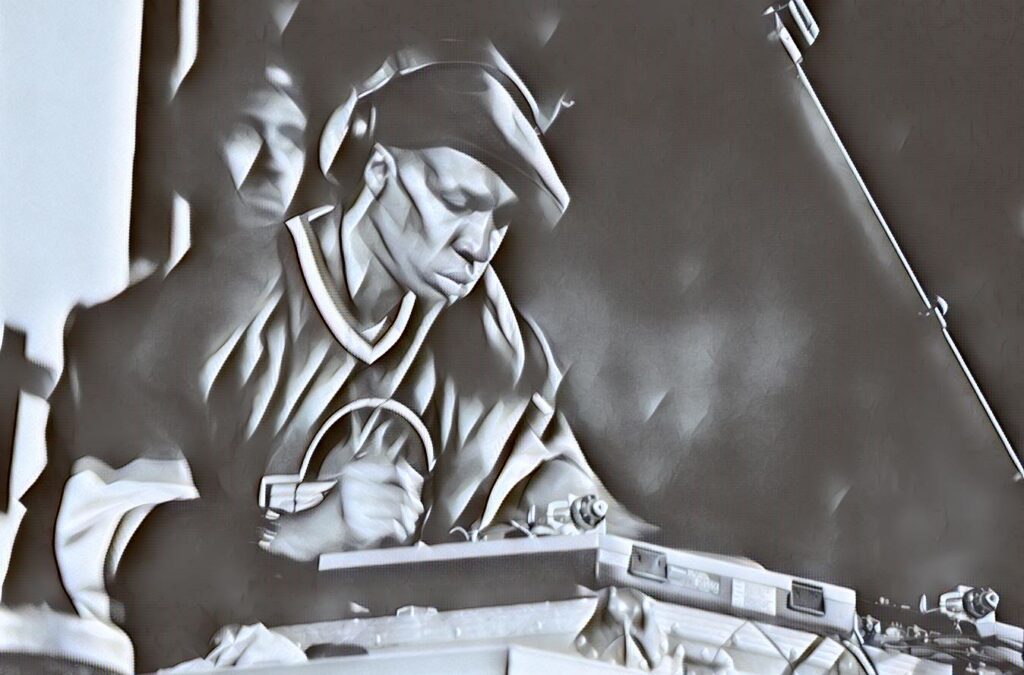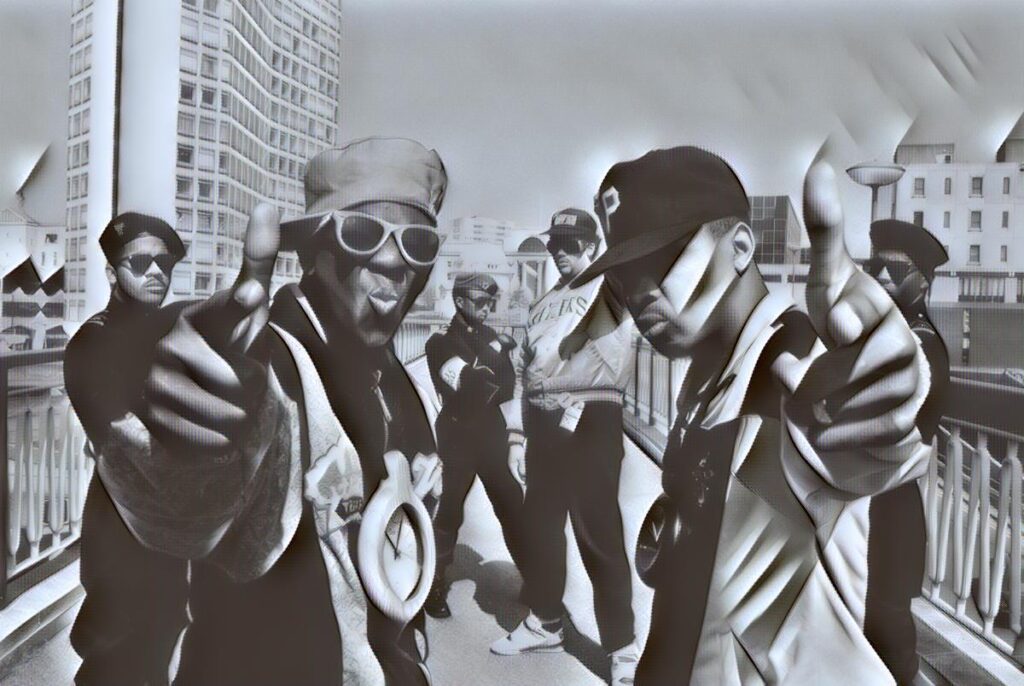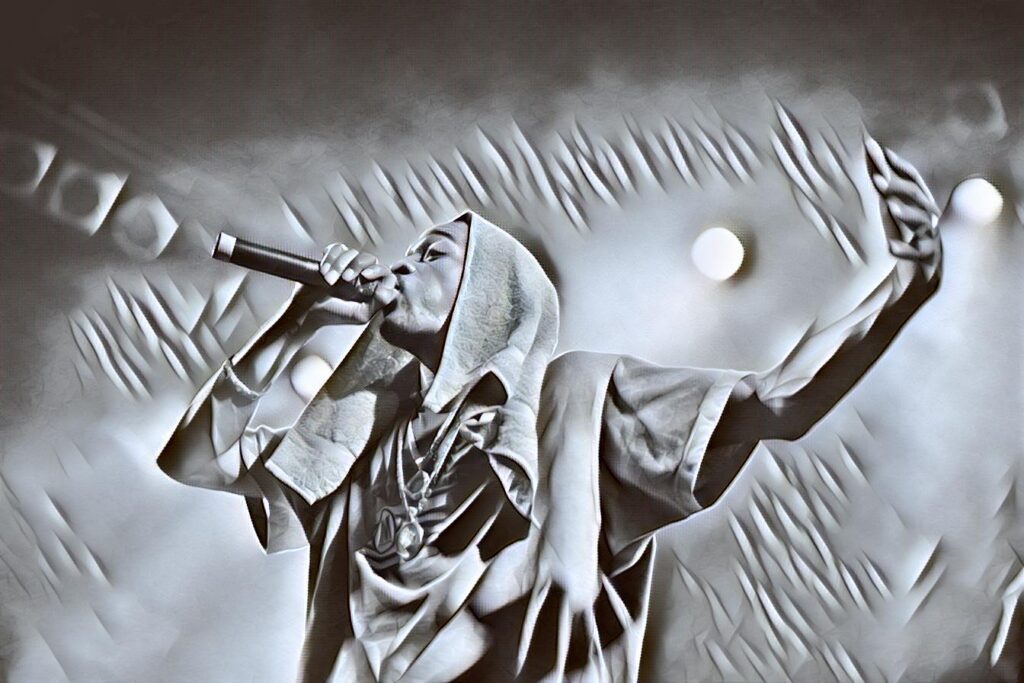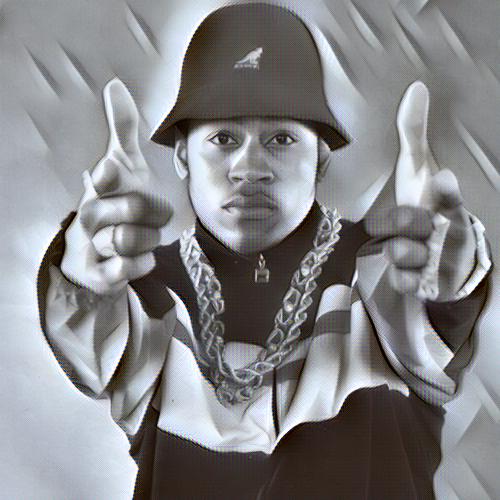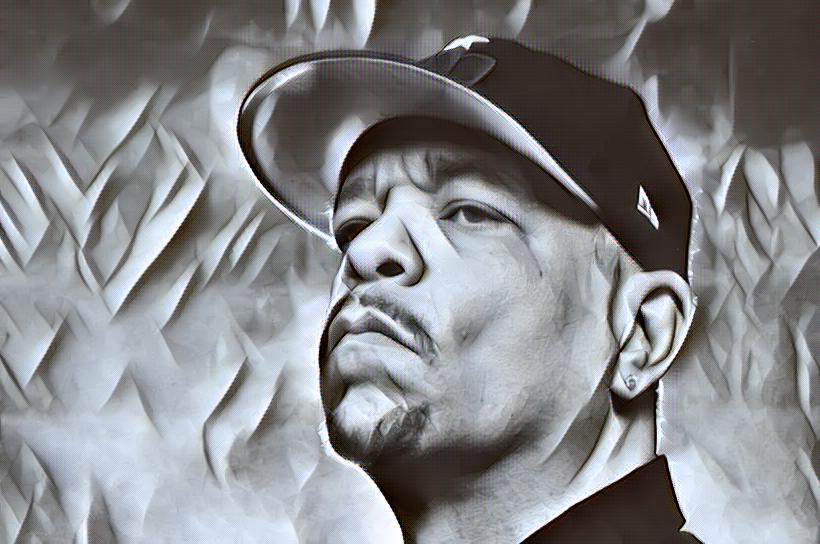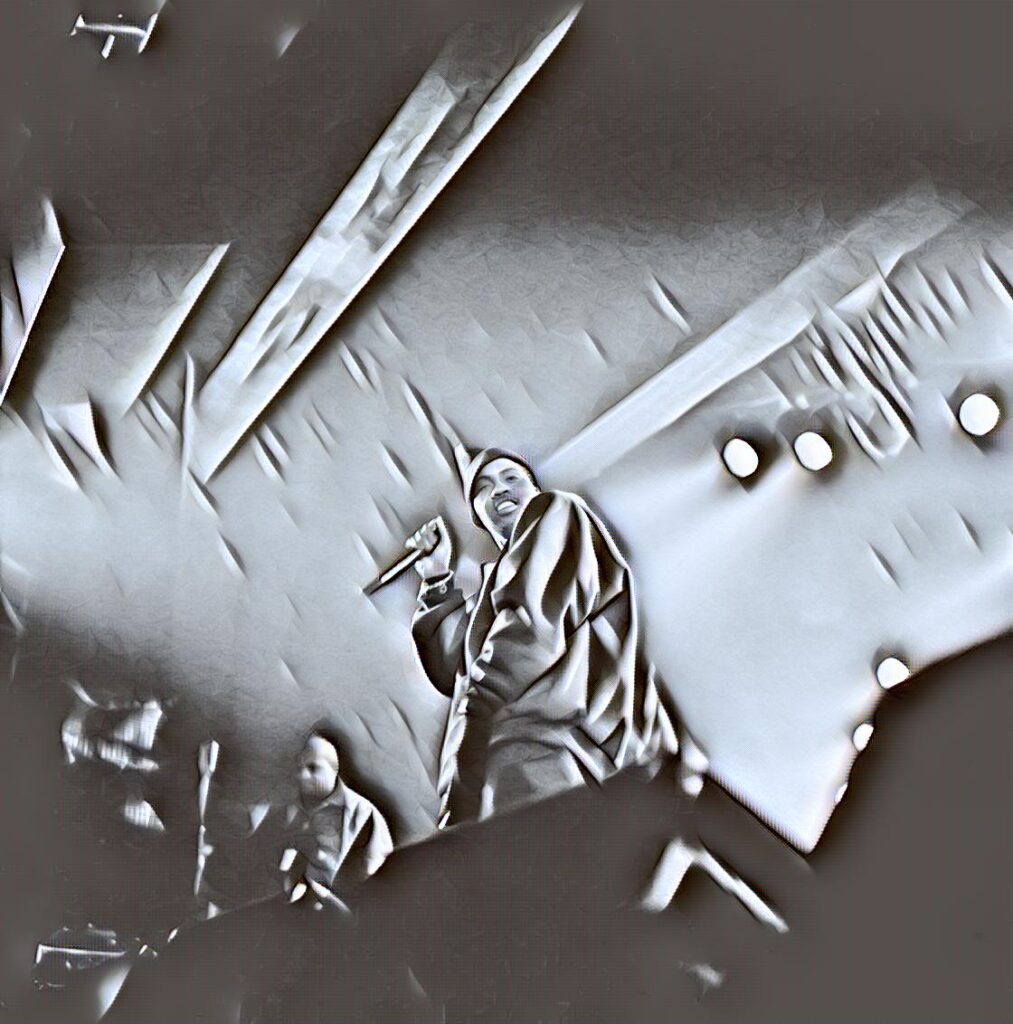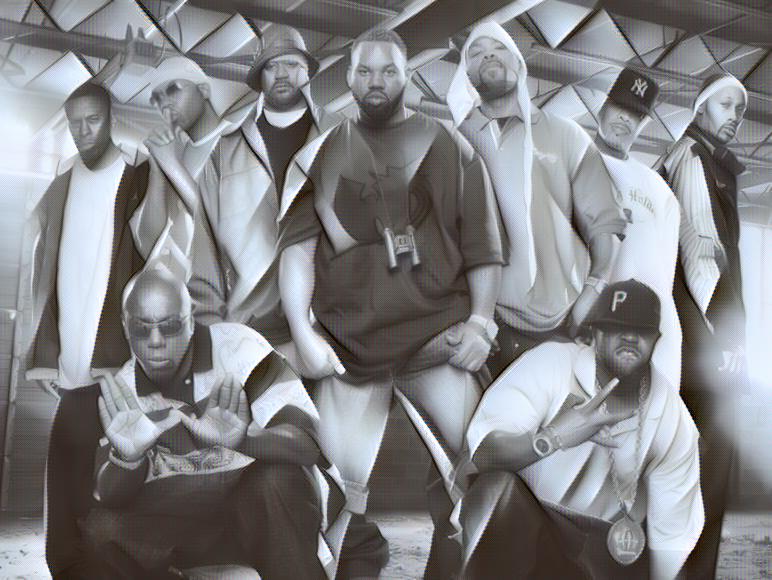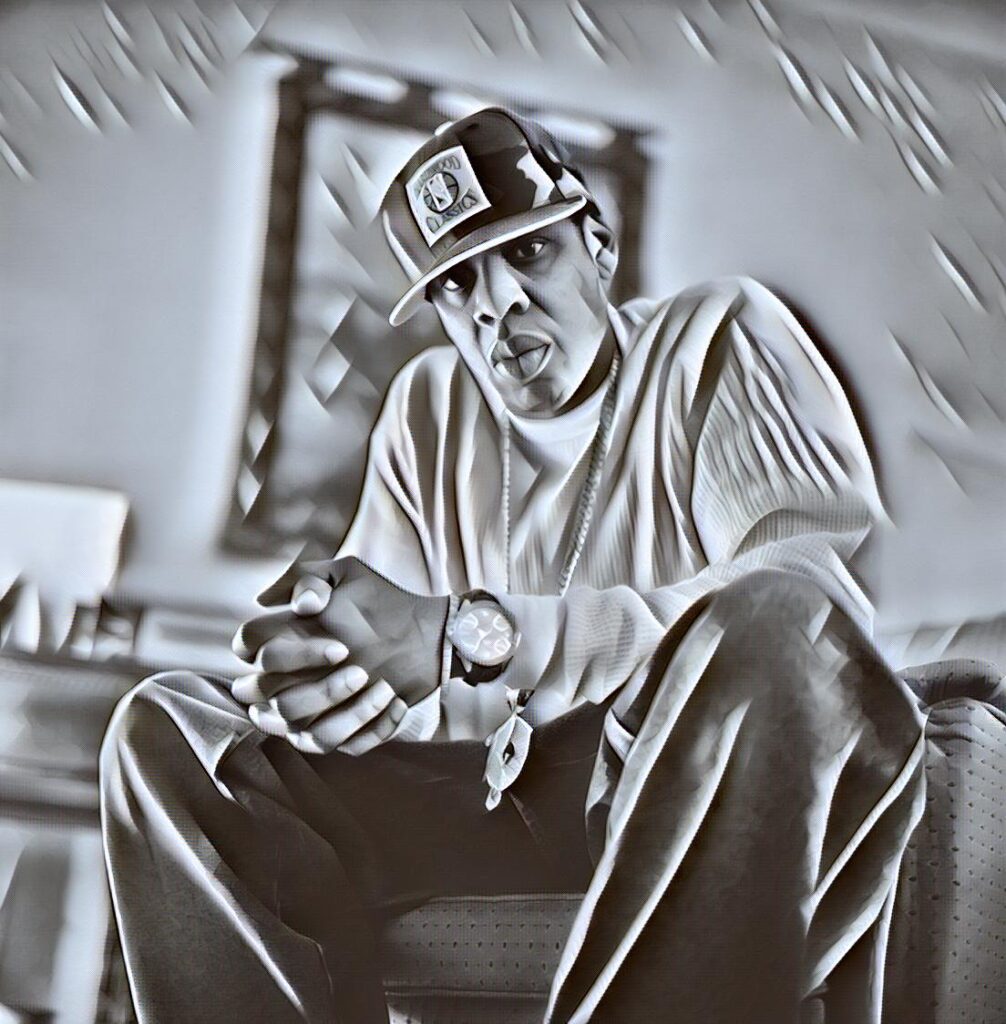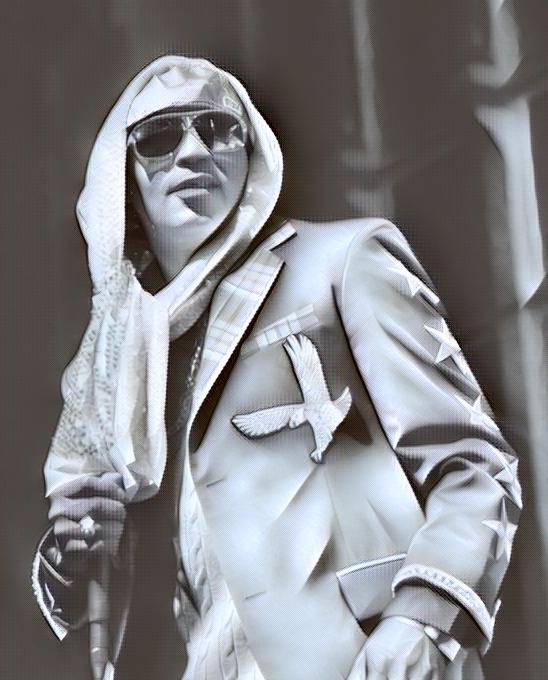Hip Hop isn’t just a genre of music; it’s an entire culture built on the pillars of DJing, emceeing, breakdancing, and graffiti art. Since its birth in the Bronx in the late 1970s, Hip Hop has been a reflection of the community that birthed it—a form of resistance, a voice for the marginalized, and a celebration of lived experiences. However, as the genre has grown to become one of the most commercially successful in the world, a question that has plagued the culture from its inception continues to resurface: What does it mean to be a “real” emcee?
At the core of Hip Hop is authenticity. Yet, in the era of global commercialization, where music is shaped by algorithms, streaming metrics, and brand partnerships, this concept has become harder to define. Is authenticity about sticking to the raw, gritty, socially conscious roots of the genre, or is it about evolving and expanding the boundaries of Hip Hop? Some purists argue that the rise of mainstream success has diluted the genre, while others see Hip Hop’s commercial reach as a victory for a culture that was once ignored. This essay explores the historical context of authenticity in Hip Hop, how commercialization has reshaped the genre, and examines the artists who have resisted compromise while navigating the modern music landscape.
The Early Years: From Party Rocking to Lyrical Substance
In the earliest days of Hip Hop, after DJ Kool Herc’s groundbreaking parties in 1973, the focus was almost entirely on the DJ. Hip Hop was born out of these block parties, where DJs like Herc, Grandmaster Flash, and Grand Wizzard Theodore would use turntable techniques to keep the crowd moving, creating the breakbeats that defined the sound of the culture. During this era, the emcee was secondary, playing the role of the hype man—keeping the energy up, shouting out crews, and engaging the crowd with simple, rhythmic rhymes. The lyrical content was light and fun, serving more as a backdrop to the DJ’s performance. The emcee’s job was not about conveying deep messages but about making sure the party didn’t stop. However, even in this early phase, skill was crucial—an emcee had to know how to control the crowd, maintain a rhythm, and be entertaining, but their rhymes rarely delved into complex themes.
As Hip Hop developed in the late 1970s and early 1980s, the emcee’s role began to shift. With the advent of recorded Hip Hop, where tracks were being pressed onto vinyl, there was an opportunity for emcees to reach a much wider audience. This change sparked a growing emphasis on lyrical substance, as Hip Hop songs were no longer just for the party—people were listening to them in their homes, on the radio, and across the country. Emcees started to experiment with more complex content, blending the party vibe with serious messages about life, society, and urban struggles.
A pivotal moment in this transition was the release of Grandmaster Flash and the Furious Five’s classic song “The Message” in 1982. This track revolutionized the concept of what Hip Hop lyrics could be, moving away from purely feel-good, party-oriented music to addressing real social issues. “The Message” painted a grim picture of life in the inner city, dealing with poverty, crime, and systemic oppression. The iconic line, “It’s like a jungle sometimes, it makes me wonder how I keep from going under,” captured the frustrations of marginalized communities in a way that had never been done before in Hip Hop. This song wasn’t about partying; it was about survival, and it marked a fundamental shift in the genre. Hip Hop had found its voice as a platform for social commentary, establishing a new standard for authenticity that would influence generations of emcees.
A year or two later, groups like the Fat Boys were making waves with a different approach. Known for their humorous and lighthearted take on Hip Hop, the Fat Boys brought fun to the forefront of their music. Songs like “Jail House Rap” and “Can You Feel It” were playful, upbeat, and designed to entertain, reflecting the party roots of early Hip Hop. However, they also demonstrated that authenticity didn’t always have to be serious or political—sometimes it could be about having fun and displaying personality. But even within their fun and comedic tracks, the Fat Boys occasionally touched on more serious topics, showing that even early Hip Hop groups known for lighthearted content were capable of depth.
Similarly, Run-D.M.C. emerged in the early 1980s as one of the most influential acts in Hip Hop, known for their hard-hitting, stripped-down beats and aggressive delivery. While they, too, made tracks that served to energize crowds, they were among the first groups to tackle more serious issues in their lyrics. Tracks like “It’s Like That,” from their self-titled 1984 debut album, addressed unemployment, poverty, and the harsh realities of urban life, echoing the socially conscious shift that Grandmaster Flash and the Furious Five had initiated with “The Message.” “Hard Times” was another early example of Run-D.M.C.’s willingness to go beyond battle rap themes and explore more substantive content. Their ability to mix hard-hitting, minimalist beats with both fun and serious subject matter helped pave the way for the more complex lyrical themes that would come to dominate Hip Hop in the mid-1980s.
Both the Fat Boys and Run-D.M.C. reflected the dual nature of early 1980s Hip Hop: one that still embraced its party roots but was increasingly moving towards a more varied lyrical landscape. These artists showed that Hip Hop was flexible—it could make you dance and laugh, but it could also make you think. This expansion of subject matter in the early 1980s set the stage for the Golden Era of Hip Hop, where lyrical skill, depth, and social consciousness would become the hallmarks of authenticity.
The Golden Era: Skill, Lyrical Depth, and Consciousness
The late 1980s and early 1990s, often called Hip Hop’s Golden Era, was a time when the genre solidified its foundations of authenticity, driven by lyrical skill, technical complexity, and social consciousness. This period represented a turning point in Hip Hop’s evolution, as artists found a balance between staying true to the streets and engaging with mainstream audiences. While Hip Hop was still grounded in its underground roots, it became commercially viable, and the emcees who thrived in this era did so by delivering raw, impactful messages alongside their technical mastery. The concept of authenticity during this era was shaped by several key figures who combined complex lyricism with profound content, touching on issues like systemic oppression, street realities, and Black empowerment.
Among the architects of this Golden Era was Public Enemy, a group that redefined authenticity by fusing politically charged lyricism with hard-hitting beats. Chuck D, the group’s primary emcee, took Hip Hop into new territory by using it as a platform to address systemic racism, police brutality, and the empowerment of Black communities. Their groundbreaking albums, It Takes a Nation of Millions to Hold Us Back (1988) and Fear of a Black Planet (1990), became a cultural and political manifesto, providing a voice for marginalized groups. With tracks like “Fight the Power” and “Don’t Believe the Hype,” Public Enemy combined radical political thought with sonic innovation, creating a blueprint for what it meant to be an authentic artist. Chuck D famously referred to Hip Hop as “the CNN of Black America,” emphasizing its role in reflecting the struggles and triumphs of the Black experience.
Public Enemy’s authenticity wasn’t just in their political messaging but in their refusal to conform to commercial pressures. Their music was unapologetically confrontational, challenging the status quo with a sound that was as revolutionary as the lyrics. Songs like “Fight the Power” weren’t just about rebellion for the sake of rebellion—they were calls to action, grounded in a deep sense of cultural and historical awareness. Flavor Flav, the group’s hype man, added a layer of entertainment and unpredictability to their dynamic, but at its core, Public Enemy’s authenticity came from their commitment to speaking truth to power, no matter the cost.
Alongside Public Enemy was KRS-One, the “Teacher,” who as the leader of Boogie Down Productions, took on the role of educator and street philosopher. With a name that stands for “Knowledge Reigns Supreme Over Nearly Everyone,” KRS-One was committed to using Hip Hop as a tool for enlightenment and social commentary. His 1987 debut album Criminal Minded with Boogie Down Productions blended hardcore street narratives and intellectualism, presenting Hip Hop as both an art form and a vehicle for social change. KRS-One’s subsequent albums, such as By All Means Necessary (1988) and Edutainment (1990), further solidified his reputation as a pioneer in conscious rap. In tracks like “My Philosophy” and “You Must Learn,” KRS-One preached self-awareness and social responsibility, challenging his listeners to think critically about the world around them. His authenticity came from his lyrical skills and his unwavering commitment to using his platform for education and empowerment.
Rakim, widely regarded as one of the greatest emcees in Hip Hop history, revolutionized the art of rhyming with his intricate, multi-syllabic rhyme schemes and intellectual lyricism. His work with Eric B. on Paid in Full (1987) and Follow The Leader (1988) set a new standard for lyrical complexity in Hip Hop. Rakim’s smooth, laid-back flow and dense wordplay distinguished him from his contemporaries, making him a figure of reverence in the culture. His approach to lyricism was almost philosophical, turning Hip Hop into a form of poetic expression that was cerebral but accessible. Rakim’s authenticity lay in his mastery of the technical aspects of rapping. He wasn’t concerned with catering to commercial trends; his focus was on perfecting his craft, and that dedication to lyricism made him one of the most respected figures in Hip Hop.
Big Daddy Kane, another pillar of the Golden Era, brought a combination of bravado and technical prowess to the mic. Known for his rapid-fire delivery and intricate wordplay, Big Daddy Kane’s albums Long Live the Kane (1988) and It’s a Big Daddy Thing (1989) displayed his ability to balance street credibility with a charismatic stage presence. Kane had the rare ability to appeal to both hardcore Hip Hop fans and a broader audience, thanks to his lyrical dexterity, smooth, polished flow, and star power. Tracks like “Set It Off,”, “Raw,” “Ain’t No Half-Steppin,’” and “Smooth Operator” became anthems, with Kane delivering complex, multi-layered bars while maintaining a cool, effortless swagger. His authenticity came from his balance of technical skill and showmanship, proving that an emcee could be both lyrically profound and commercially viable without losing credibility.
Kool G Rap, one of the most influential figures in hardcore street rap, brought gritty, vivid storytelling to the forefront of the genre, his bars delivered with a level of lyrical complexity that set him apart from his peers. Kool G Rap’s multisyllabic rhyme schemes and relentless flow made him a pioneer of the mafioso rap style, influencing future generations of emcees like Nas, Jay-Z, and The Notorious B.I.G. G Rap’s authenticity stemmed from his ability to deliver raw, unfiltered stories of street life while maintaining a high level of lyrical sophistication.
While these artists embodied the underground spirit of Hip Hop, LL Cool J was one of the first emcees to successfully straddle the line between being a “real” emcee and a mainstream superstar. LL’s 1985 debut album Radio established him as a force to be reckoned with, combining hard-hitting beats with an aggressive, battle-rap style. Tracks like “Rock the Bells” flaunted LL’s lyrical prowess and raw energy, but he also demonstrated a versatility that few other emcees had at the time. With songs like “I Need Love,” LL Cool J became one of the first Hip Hop artists to deliver a commercially successful love ballad without compromising his authenticity.
LL Cool J’s ability to navigate both worlds—staying true to the streets while appealing to a broader audience—helped lay the foundation for future Hip Hop stars. His career trajectory showed that an emcee could achieve mainstream success without sacrificing their core identity. LL Cool J’s longevity in the game, coupled with his versatility, made him a blueprint for later artists who sought to balance credibility with crossover appeal.
During the Golden Era, another key player in defining authenticity through raw street narratives and controversial content was N.W.A. Emerging from Compton, California, N.W.A, short for N****z Wit Attitudes, brought West Coast gangsta rap to the forefront with their unapologetically aggressive and rebellious sound. Their 1988 album Straight Outta Compton introduced the world to the harsh realities of inner-city life, police brutality, and systemic injustice, all told through vivid storytelling. Tracks like “F*** tha Police” and “Straight Outta Compton” sparked nationwide conversations about freedom of speech and the social conditions facing Black Americans. N.W.A’s authenticity was rooted in their defiance of authority and refusal to soften their message for mainstream acceptance. Their influence helped shift Hip Hop’s geographic center from the East Coast to the West Coast, further expanding the genre’s cultural reach.
Ice-T also played a pivotal role in shaping the gangsta rap subgenre, blending street wisdom with sharp commentary on crime, violence, and social inequality. His 1987 album Rhyme Pays and the infamous track “6 in the Mornin’” are often cited as early blueprints for gangsta rap. With his 1991 album O.G. Original Gangster, Ice-T solidified his place as a West Coast pioneer, not only as a rapper but as an artist who used his platform to discuss the consequences of street life. Ice-T’s authenticity came from his lived experience as both an observer and participant in the gritty realities of urban life, making him a voice that resonated with those living through the same struggles he rapped about.
N.W.A and Ice-T’s contributions to Hip Hop reflected the stark, unvarnished realities of life in the streets while challenging the powers that sought to suppress their message. They paved the way for future West Coast artists, cementing their place in the Golden Era as pivotal forces that reshaped the conversation around Hip Hop’s role in society and its capacity to speak truth to power.
The Second Phase of the Golden Era: Expanding the Boundaries
As the early 1990s progressed, Hip Hop entered a new phase of its Golden Era, characterized by a greater diversification of sound and lyrical themes. This period saw the genre evolve further, with artists pushing the boundaries of Hip Hop while maintaining the core values of authenticity, skill, and consciousness. While the late 1980s laid the foundation, the early to mid-1990s took Hip Hop to new heights, solidifying it as a dominant cultural force.
Nas‘ debut album Illmatic (1994) is often hailed as the pinnacle of this second phase and one of the greatest Hip Hop albums ever created. Nas’ authenticity was rooted in his vivid storytelling and poetic lyricism, capturing the struggles and triumphs of life in the Queensbridge projects. Illmatic is a masterclass in combining street-level realism with introspective, philosophical musings. Tracks like “NY State of Mind” and “The World Is Yours” exemplify Nas’ ability to paint detailed pictures of his environment while reflecting on broader societal issues. His authenticity came from his unfiltered depiction of urban life, delivered with a level of lyrical sophistication that placed him among the greats.
During this period, groups like De La Soul and A Tribe Called Quest redefined what it meant to be an authentic Hip Hop artist by embracing a more eclectic, Afrocentric approach to the genre. De La Soul’s debut album, 3 Feet High and Rising (1989), brought a quirky, playful sensibility to Hip Hop, blending jazz, soul, and funk with offbeat humor and thoughtful commentary. They introduced a new level of creativity and individuality to the culture, challenging the tough, hardcore image that was prevalent at the time. Despite their lighthearted vibe, De La Soul’s authenticity was unquestionable, rooted in their unique artistic vision and their refusal to conform to industry expectations.
A Tribe Called Quest, part of the Native Tongues collective alongside De La Soul, also made significant contributions to Hip Hop’s evolution in the early 1990s. With albums like The Low End Theory (1991) and Midnight Marauders (1993), Tribe blended jazzy, laid-back production with introspective and socially conscious lyrics. Tracks like “Scenario” and “Electric Relaxation” displayed their ability to balance intellectual depth with accessibility. Their authenticity came from their unapologetic embrace of Afrocentrism and their commitment to addressing issues affecting the Black community, all while pushing the boundaries of Hip Hop sonically and lyrically.
At the same time, 2Pac and The Notorious B.I.G. emerged as two of the most influential and iconic figures of this era, representing the duality of Hip Hop’s evolving identity. 2Pac was known for his deeply emotional and often contradictory persona, blending militant social consciousness with personal vulnerability. His albums Me Against the World (1995) and All Eyez on Me (1996) captured the complexity of his character, as he navigated themes of systemic oppression, personal pain, and violent rebellion. 2Pac’s authenticity stemmed from his raw emotional expression, his willingness to address both the triumphs and the tragedies of life, and his unflinching critique of the injustices faced by Black America.
On the other hand, The Notorious B.I.G. brought a more polished, mafioso-inspired style to the genre, showcasing both his street credibility and his knack for storytelling. His 1994 debut album Ready to Die remains a classic for its gritty tales of hustling, survival, and existential contemplation, told with an unmatched lyrical flow. Tracks like “Juicy” and “Big Poppa” highlighted his ability to merge mainstream appeal with street authenticity, making him one of the most revered emcees in Hip Hop history. Biggie’s authenticity was rooted in his charisma, lyrical dexterity, and his ability to translate the harsh realities of his life into universally relatable music.
While individual artists were pushing boundaries, the emergence of Wu-Tang Clan in the early 1990s redefined what it meant to be authentic as a collective. Hailing from Staten Island, New York, Wu-Tang Clan, led by RZA, brought an unprecedented level of rawness, mystique, and street authenticity to Hip Hop. Their debut album Enter the Wu-Tang (36 Chambers) (1993) was gritty and unpolished, yet revolutionary. With its stripped-down beats, kung-fu film samples, and a roster of nine distinct voices, Wu-Tang Clan presented a chaotic, yet cohesive, take on street life that felt visceral and real.
Each member of Wu-Tang—Method Man, Ghostface Killah, Raekwon, GZA, Ol’ Dirty Bastard, RZA, Inspectah Deck, Masta Killa, and U-God—brought their own flavor to the group, with intricate lyricism that touched on everything from hustling and survival to philosophical musings. Albums like Raekwon’s Only Built 4 Cuban Linx… (1995) and GZA’s Liquid Swords (1995) expanded on Wu-Tang’s core ethos, proving that street credibility and conceptual artistry could go hand in hand. Wu-Tang’s authenticity wasn’t just about being raw or gritty; it was about their commitment to creative independence. Their groundbreaking decision to allow each member to sign solo deals with different labels set a new precedent in Hip Hop, emphasizing the importance of maintaining control over one’s art and career. Wu-Tang’s influence stretched far beyond just their music; they became a blueprint for future independent artists who sought to maintain authenticity while navigating the industry.
In the second phase of the Golden Era, authenticity was defined by an emcee’s ability to expand the boundaries of Hip Hop while staying true to the core elements of the culture. Whether it was Nas’ poetic storytelling, De La Soul’s eclectic creativity, A Tribe Called Quest’s introspection, Wu-Tang Clan’s gritty rawness, 2Pac’s emotional depth, or Biggie’s smooth lyrical mastery, this period produced some of the most influential and enduring artists in Hip Hop’s history. Their contributions continue to influence the culture, and their commitment to authenticity remains a guiding principle in Hip Hop today.
Commercialization: The Rise of the Mainstream
By the late 1990s and early 2000s, Hip Hop had become big business. With artists like Puff Daddy (now Diddy), Jay-Z, DMX, and Master P making their way into the mainstream, Hip Hop was no longer just a cultural movement—it was a profitable industry. With this success, however, came new questions about what it meant to be an authentic emcee. Could an artist who embraced commercial success still be considered “real”?
Jay-Z is perhaps the most emblematic figure of this era. His debut album Reasonable Doubt (1996) was a street-level masterpiece, filled with tales of hustling and survival. However, as his career progressed, Jay-Z embraced the business side of the music industry. He became a mogul, with albums like The Blueprint (2001) and The Black Album (2003) blending street tales with commercial appeal. For some, Jay-Z’s ability to balance the two worlds—remaining connected to his past while achieving unparalleled success—made him the epitome of a “real” emcee in the modern era. For others, his embrace of wealth and luxury represented a shift away from the authenticity that defined the Golden Era of Hip Hop.
Puff Daddy took this commercialization even further, with flashy, radio-friendly hits and extravagant music videos that celebrated wealth, fame, and success. His 1997 album No Way Out was a far cry from the socially conscious music of earlier decades. While it sold millions of records and made Diddy a household name, it also sparked debates about whether this form of Hip Hop was authentic or whether it had “sold out” to commercial interests.
The rise of the “bling era” in the late ’90s and early 2000s marked a period when wealth and excess became central themes in mainstream Hip Hop. Artists like Ludacris, Lil Wayne, and Nelly enjoyed massive success with songs that often emphasized material wealth and hedonism. While these artists were undeniably talented, many in the Hip Hop community began to question whether their music was contributing to the genre’s evolution or diluting its core values.
Underground and Independent Artists: The Guardians of Authenticity
While mainstream Hip Hop was becoming more commercialized, a vibrant underground scene continued to thrive. These artists, often working outside the major label system, rejected the emphasis on commercial appeal and instead focused on maintaining the integrity of the culture. In many ways, the underground became the last bastion of authenticity, where emcees could focus on lyrical content, skill, and storytelling without the pressures of fitting into the mainstream mold.
Artists like R.A. the Rugged Man, J-Live, and billy woods (and many others) exemplify this resistance. R.A. the Rugged Man, for example, has always maintained his underground credibility by refusing to conform to industry standards. His raw, often abrasive style has made him a cult figure in the underground scene. His 2013 album Legends Never Die is filled with unfiltered, personal storytelling, showcasing his lyrical prowess and refusal to compromise.
Similarly, J-Live is revered for his intellectual approach to Hip Hop. Albums like The Best Part (2001) and All of the Above (2002) are a testament to his dedication to authenticity, featuring lyrics that explore themes of education, societal issues, and self-awareness. Despite never achieving massive commercial success, J-Live’s lyrical skill and message-driven music have earned him the respect of both fans and fellow emcees. His music is a reminder that authenticity isn’t about how many records you sell—it’s about staying true to your vision and your craft.
More recently, billy woods has carved out a unique space in the independent Hip Hop scene. Known for his dense, abstract lyricism and unorthodox production choices, billy woods has built a career on defying expectations. His 2019 album Hiding Places, a collaboration with producer Kenny Segal, is just one example of his refusal to conform to industry standards. Instead of chasing commercial trends, billy woods focuses on creating music that challenges listeners, both lyrically and sonically. His authenticity comes from his ability to stay true to his artistic vision, even as the music industry changes around him.
Other underground legends like MF DOOM and Immortal Technique have also built entire careers without bowing to the pressures of mainstream success. MF DOOM, with his signature mask and cryptic rhyme schemes, created a world of his own that didn’t rely on chart success or major label backing. Albums like Madvillainy (2004) and MM..FOOD (2004) remain cult classics, revered for their creativity, lyrical density, and disregard for industry norms.
Immortal Technique, on the other hand, used his music as a vehicle for political activism. Known for his hard-hitting lyrics about imperialism, social injustice, and systemic corruption, his albums Revolutionary Vol. 1 (2001) and Revolutionary Vol. 2 (2003) are powerful manifestos that challenges the status quo. Immortal Technique’s refusal to align himself with major labels has allowed him to speak freely on controversial issues, solidifying his status as one of the most authentic voices in Hip Hop.
Kool Keith is another vital figure in the underground and independent Hip Hop scenes, embodying authenticity through his innovative and often eccentric style. Starting with his legendary group Ultramagnetic MCs, Kool Keith was a part of one of the most groundbreaking acts in early Hip Hop. The group’s 1988 album Critical Beatdown is widely considered a classic for its complex lyricism, unorthodox production, and futuristic themes. Kool Keith’s influence can’t be overstated—his offbeat style, experimental subject matter, and abstract lyrics pushed the boundaries of what Hip Hop could be. He was never afraid to step outside the norm, whether through his science fiction-inspired alter ego Dr. Octagon, or his many other solo projects.
Kool Keith’s solo career, particularly in the late 1990s, solidified his status as a pioneer of underground authenticity. His 1996 album Dr. Octagonecologyst (released under his Dr. Octagon alias) is hailed as a masterpiece of experimental Hip Hop. The album, produced by Dan the Automator, introduced listeners to a surreal, science-fiction world with Kool Keith’s bizarre and often disturbing lyrics paired with avant-garde production. Dr. Octagonecologyst was unlike anything else in Hip Hop at the time, and its refusal to conform to mainstream conventions helped it become a cult classic.
Beyond Dr. Octagon, Kool Keith continued his streak of defying norms with other classics such as Sex Style (1997) and First Come, First Served (1999). Sex Style introduced the concept of “pornocore,” with Keith weaving raunchy and humorous sexual themes into his rhymes while maintaining a complex lyrical structure. Meanwhile, First Come, First Served saw Keith adopt another alter ego, Dr. Dooom, where his dark humor and outlandish persona were on full display. His refusal to chase mainstream trends, instead crafting bizarre and boundary-pushing art, has made Kool Keith a symbol of Hip Hop authenticity. Throughout his decades-long career, he has remained true to his eccentric and experimental style, never bending to the pressures of the industry. For those who value originality and creativity, Kool Keith’s body of work represents the epitome of authenticity.
Independent labels like Rhymesayers Entertainment and Def Jux have also played a crucial role in preserving authenticity in Hip Hop. Artists like Aesop Rock, Brother Ali, and Atmosphere have built careers without compromising their artistic integrity. Brother Ali, for instance, is known for his deeply personal lyrics that address issues of race, religion, and self-identity. His best album Shadows on the Sun (2003) remains a blueprint for authenticity in Hip Hop, with its introspective storytelling and rejection of commercial norms.
Aesop Rock, one of the most lyrically dense and complex emcees in the underground, has crafted a unique career based on his intricate wordplay and abstract narratives. His 2001 album Labor Days explored themes of working-class struggles, existentialism, and personal identity. Aesop Rock’s commitment to maintaining his artistic freedom, despite the pressures to conform to more accessible sounds, has made him one of the most respected figures in underground Hip Hop.
Similarly, Atmosphere, composed of rapper Slug and producer Ant, has consistently delivered music that tackles themes of depression, love, and self-doubt, all while maintaining a DIY ethos. Their 2002 album God Loves Ugly is the best example of their dedication to raw, emotionally honest music that connects deeply with fans without relying on radio-friendly singles or gimmicks.
These underground and independent artists, along with many others, continue to define and defend what it means to be authentic in Hip Hop, rejecting the commercial trends and industry pressures that often compromise artistic integrity. Their work serves as a reminder that, at its core, Hip Hop is about staying true to oneself and the culture, regardless of whether the mainstream ever catches on.
Authenticity in the Modern Era: A Fluid Concept
Today, the question of authenticity in Hip Hop is more complex than ever. The genre has grown to encompass a wide range of styles, from the introspective, lyrical approach of artists like Kendrick Lamar and J. Cole to the melodic, auto-tuned sound of artists like Lil Uzi Vert and Travis Scott. For some, authenticity still means adhering to the traditional values of Hip Hop: lyrical skill, storytelling, and social consciousness. Artists like Kendrick Lamar, whose albums good kid, m.A.A.d city (2012) and To Pimp a Butterfly (2015) are widely regarded as modern-day classics, have managed to balance commercial success with deeply personal, politically charged music. Kendrick’s authenticity comes from his ability to stay true to his experiences while addressing larger societal issues.
On the other hand, artists like Cardi B, Travis Scott, and Lil Uzi Vert have redefined authenticity differently. For these artists, authenticity is about being true to their own experiences, even if those experiences don’t align with traditional Hip Hop values. Cardi B, for example, may not be known for lyrical depth, but her unapologetic, no-holds-barred approach to her life and career has earned her a massive following. Her authenticity comes from her transparency, whether she’s discussing her past as a stripper or her rise to fame. Similarly, Lil Uzi Vert’s otherworldly persona and genre-blurring music have made him a star, despite his divergence from the traditional emcee mold. His music is more about expressing emotion and individuality than adhering to the lyrical standards of the Golden Era.
The commercialization of Hip Hop, while often seen as a threat to authenticity, has also opened the door for a more inclusive and diverse range of voices. Today, being a “real” emcee can mean many different things. It can mean adhering to the roots of the genre, like Kendrick Lamar or Joey Bada$$, or it can mean going in another direction with rap music, as artists like Travis Scott and Playboi Carti have done.
Conclusion: The Ever-Evolving Definition of Authenticity
Authenticity in Hip Hop has always been a contested concept, but one thing remains constant: being a “real” emcee means staying true to your own voice, whether that voice is grounded in street narratives, political activism, personal struggles, or artistic experimentation. While the commercialization of Hip Hop has introduced new challenges, it has also allowed the genre to grow and evolve in ways that were unimaginable in its early days.
Today, authenticity in Hip Hop is not about conforming to a single set of rules or expectations. It’s about finding your own path, whether that means staying underground and independent like billy woods and R.A. the Rugged Man, or dominating the charts while maintaining lyrical substance like Kendrick Lamar. As long as Hip Hop remains a platform for genuine expression, the question of what it means to be a “real” emcee will continue to evolve. And that, in itself, is a testament to the authenticity of the genre—Hip Hop has always been about growth, adaptation, and staying true to the self, no matter the obstacles.
